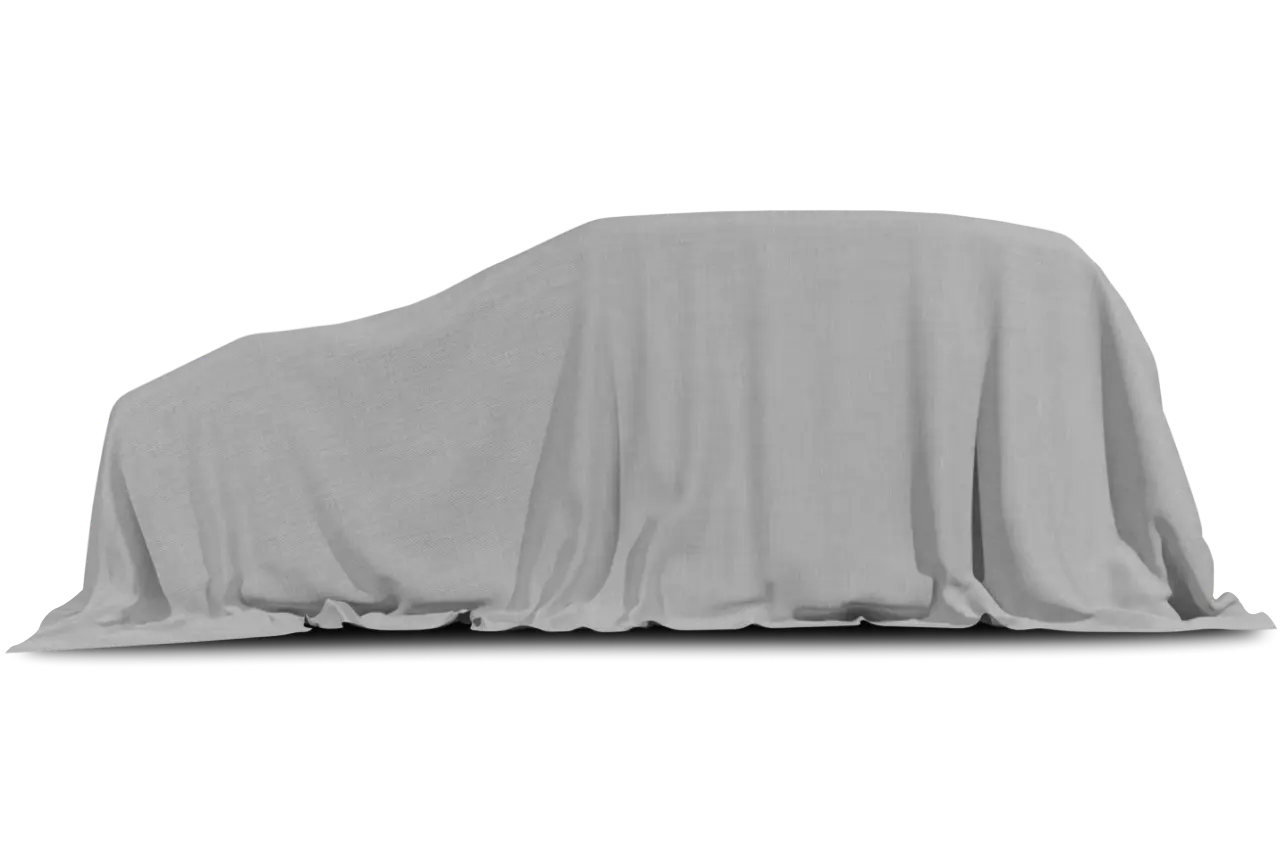
There’s no question the Land Rover Range Rover, a Cars.com Best Bet for several years running, has very deliberate priorities. It eschews faddy styling or any illusion of value, instead going for broke on interior quality and 4×4 chops. The result is an SUV with exceptional craftsmanship and a chassis that’s capable of serious offroad mischief.
Alas, all good things must come to an end. The 2008 model year is year six of the current design, and its age is starting to show — especially in the all-important area of feature execution. If cabin quality is your top priority, the Range Rover may still be your best choice, but in many other respects the competition has pulled ahead.
Don’t confuse the Range Rover with Land Rover’s Range Rover Sport, which is an entirely different vehicle based on the smaller LR3. The Range Rover’s starting price is about $20,000 more than its Sport sibling, and it comes in HSE and Supercharged trims. Click here to see a comparison between the 2008 and 2007 Range Rovers. I drove a Range Rover HSE.
Going & Stopping
Those accustomed to the sort of acceleration competitors like the Cadillac Escalade and Mercedes-Benz GL550 can drum up will be disappointed: The Range Rover is quick enough for most situations, but its passing power is comparatively modest.
One high point is the standard six-speed automatic; it works gamely to move things along, upshifting imperceptibly around town and downshifting on the highway without much delay. There are Sport and manual-shift modes, though I’m not sure why — short of an offroad situation or downhill stretch — anyone would want to work the gears themselves. Sport mode is comparatively more useful: It holds lower gears longer to effect more fluid acceleration around town, though I found its penchant for frequent kickdown on the highway made for some unnecessary gear-hunting.
Ultimately the Range Rover’s competence boils down to numbers. HSE models have a 305-horsepower, 4.4-liter V-8, and the automatic comes from ZF, the transmission supplier behind Jaguar’s superb gearboxes — but the drivetrain here is tasked with hauling 5,698 pounds of SUV. That’s 33 pounds more than the 403-hp Cadillac Escalade.
The Range Rover Supercharged aims to address this: Its engine is a 400-hp, supercharged 4.2-liter V-8. Here’s how the two compare:
| Engines Compared | |||||||||||||||||
|---|---|---|---|---|---|---|---|---|---|---|---|---|---|---|---|---|---|
| HSE | Supercharged | ||||||||||||||||
| Engine | Normally-aspirated 4.4L V-8 | Supercharged 4.2L V-8 | |||||||||||||||
| Horsepower (@ rpm) | 305 @ 5,750 | 400 @ 5,750 | |||||||||||||||
| Torque (lbs.-ft. @ rpm) | 325 @ 4,000 | 420 @ 3,500 | |||||||||||||||
| Transmission | 6-speed automatic | 6-speed automatic | |||||||||||||||
| EPA gas mileage | 12/18 | 12/18 | |||||||||||||||
| Recommended fuel | Premium | Premium | |||||||||||||||
| Source: Automaker data | |||||||||||||||||
Though I haven’t driven the Supercharged model, fellow Cars.com editors who have report it’s much lighter on its feet, so if you have a particular need for speed it might be worth checking out. Land Rover quotes zero-to-60 mph times of 7.1 seconds for the Supercharged and 8.3 seconds for the HSE. (In comparison, Mercedes says the base, 5,280-pound GL550 flits to 60 mph in just 6.4 seconds.)
With either engine, maximum towing capacity is 7,716 pounds. That’s competitive with the Escalade and GL550, though the Lexus LX 570 manages to tow 8,500 pounds.
Four-wheel-disc antilock brakes are standard. I was generally unimpressed with their performance: The pedal is spongy at first and becomes grabby farther down. The GL550 delivers stronger braking overall, and the Escalade’s brakes are more impressive still.
Ride, Handling & Offroad Credentials
Unlike the LX 570 and Escalade, which have body-on-frame constructions, the Range Rover is built on a reinforced unibody platform with a four-wheel-independent air-spring suspension. The setup delivers a comfortable highway ride with minimal road noise. Wind noise can creep up at higher speeds, but crosswinds never fazed my test car. Ride quality is exceptional; the suspension soaks up bumps with little disturbance to the cabin, and its well-settled response has none of the lingering reverberations I felt in the GL550.
Curvy roads induce plenty of body roll. The wheels stay on course if you hit any bumps, though, giving the Range Rover a well-grounded feeling that’s uncommon in full-size SUVs. Land Rover says the HSE and Supercharged share the same suspension tuning.
I’m not as big a fan of the steering setup. The wheel turns with a light touch, but turn-in precision can be inconsistent — at times it yields quick response, but otherwise its movements seem a bit vague. In close quarters, the Range Rover’s 39.4-foot turning diameter is midpack, within a foot of competitors’.
Being born of offroad utility, the Range Rover has some serious mud-trekking credentials. Full-time four-wheel drive is standard, and in offroad mode the air suspension can raise the vehicle 2.2 inches above its normal ride height. That allows 11 inches of ground clearance, which is about an inch more than a Hummer H2 offers. A two-speed transfer case, locking center differential and Land Rover’s Terrain Response system (see the thumbnail above) are standard. Serious off-roaders will want to get the locking rear differential, which is optional on the HSE and standard on the Supercharged.
Exterior & Styling
When the Range Rover arrived in early 2002, its nouveau-riche styling shared the spotlight with the then-radical Escalade. Most competitors have since been redesigned, but the Range Rover gained only a modest face-lift for the 2006 model year. These days, its lines — virtually all of them straight — embody European restraint, with simple dark textures where others might put chrome. The Range Rover is now the reserved one in its class, and that may still appeal to some.
Nineteen-inch alloy wheels are standard. Twenty-inchers are optional on the HSE and standard on the Supercharged.
The Inside
Interior quality is generally outstanding, but some major features are starting to show their age — and in an SUV this pricey, the sum of annoyances becomes a major shortcoming.
Let’s start with the good. Land Rover offers two grades of leather upholstery: Blenheim and Windsor. My test car had the fancier Windsor hides, which are optional on the HSE and standard on the Supercharged. Their quality would befit any six-figure car, though the raised stitching on the inserts dug into my back at times. In terms of firmness, the seats feel somewhere near the GL550’s, though their side bolsters aren’t nearly as confining. If you’re a fan of cushier upholstery, the LX 570 is probably your ticket.
Dashboard quality is luxury-car solid, with soft-touch plastics everywhere and plenty of high-grade aluminum trim. There’s attention to details, too: The climate controls and seat heater dials feel expertly crafted, and the rubberized thumbwheels for the A/C vents click softly into their fully open or closed positions. The standard navigation system is no usability champion, but its touch-screen-and-knob interface is intuitive enough. Punch in a destination, and you’ll be guided by a British voice that sounds like a nasally Patrick Stewart. (If he tells you to set a course for the Delta Quadrant, be advised it may take some time to get there.)
Both rows of seats offer excellent legroom and headroom, though thigh support is lacking a bit in back. Thanks to tall windows and a mildly raked windshield, forward visibility is excellent, but the enormous head restraints on all seats can reduce side and rear visibility a bit.
The issues add up from there. There are upper and lower glove compartments, but the upper one is almost entirely consumed by a CD changer. Competitors integrate theirs with the nav system, or at least put a single-disc player there for the sake of convenience. The steering wheel has powered tilt and telescope controls, but its telescoping range is only about a half-inch. The backup camera is egregiously mounted above the rear window, so the Range Rover’s bumper is largely missing in the display. It helps show any hidden obstructions, but for precise parallel parking it’s virtually useless. Fortunately, front and rear audible parking sensors are also standard.
In back, the rear seats are not adjustable, as many are. Tumble the seats forward and the resulting cargo floor is scattered with hooks for the seats that could catch oddly shaped cargo.
The rear door employs a manual liftgate/tailgate combination, with the top four-fifths going up and the remainder folding down. It’s similar to the LX 570’s setup, but it doesn’t have any of the Lexus’ power-operated tricks. Shorter drivers will appreciate the low lift-over height for luggage, but when the tailgate is dropped it could be a long reach to pull anything out.
Maximum cargo volume of 74.2 cubic feet trails the LX 570 and GL550 by more than 10 percent. The regular-length Escalade beats all three by a significant margin, with 108.9 cubic feet. Then again, the Range Rover lacks the third-row seat they all have. Neither the LX 570’s nor the Escalade’s third row is anything better than an occasional-use row, but having one at all makes an SUV more palatable for families.
Safety & Reliability
As of this writing, the Insurance Institute for Highway Safety has not crash tested the Range Rover. Augmenting the required front airbags are a driver’s knee airbag, as well as side-impact airbags for the front seats and head-protection airbags for both rows. The overhead airbags aren’t the more conventional curtains — they’re tube-style in front, while the rear airbags cover the head area only. Curtain airbags typically cover the entire window.
Four-wheel-disc antilock brakes, traction control and an electronic stability system are also standard.
If there’s a foible among high-end SUVs, it’s reliability. Consumer Reports lacked sufficient samples to rate the Range Rover for 2007, but for 2006 the SUV earned the worst possible score, Much Worse Than Average. The Escalade and GL-Class received the same rating, while the new LX 570 hasn’t been on the market long enough to get a score.
Features & Pricing
Without the destination charge, the Range Rover HSE starts at $77,175, which is within a few grand of the GL550, LX 570 and AWD Escalade Platinum Edition. Like its peers, the Range Rover comes well-equipped, with standard luxuries like heated leather front and rear seats and a navigation system. Cooled front seats are optional. They’re standard on the Range Rover Supercharged ($92,825), which also has 20-inch wheels — a $4,000 upgrade on the HSE — and the uprated V-8 engine. On either model, a DVD system with screens set in the backs of the front head restraints adds $2,500. It’s the sole factory option on the Supercharged.
Range Rover in the Market
Once a handsome choice for the well-to-do, the current Range Rover has reached its twilight years. Its cabin materials still define quality — and if that’s all that matters to you, it could prove a solid choice. For this sort of money, however, many luxury SUVs manage swifter road manners and better feature execution. Comparatively, the Range Rover’s bona fides just don’t cut it like they used to.
Not to worry, Land Rover fans. With Indian automaker Tata ready to take the helm, plans for a face-lifted Range Rover set to arrive sometime in 2009 are reportedly still intact. Given the mechanical changes in store — Automotive News says the SUV will receive a new 5.0-liter V-8 — I can only hope Land Rover plans to resolve some of the feature issues as well. If the details pan out as expected, waiting that extra year might be the smartest choice of all.
| Send Kelsey an email |










































.jpg)